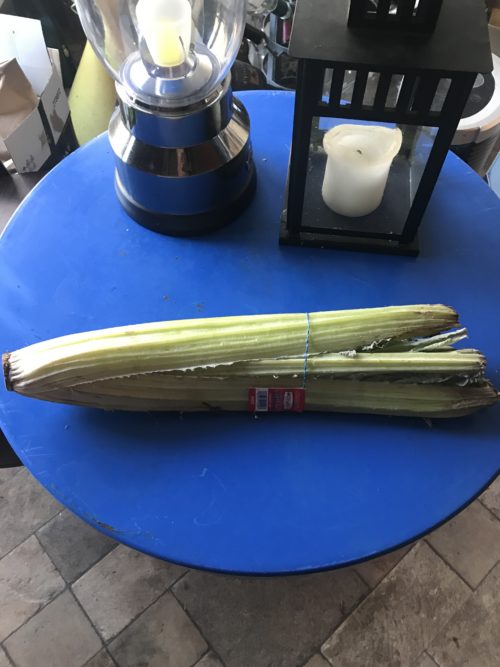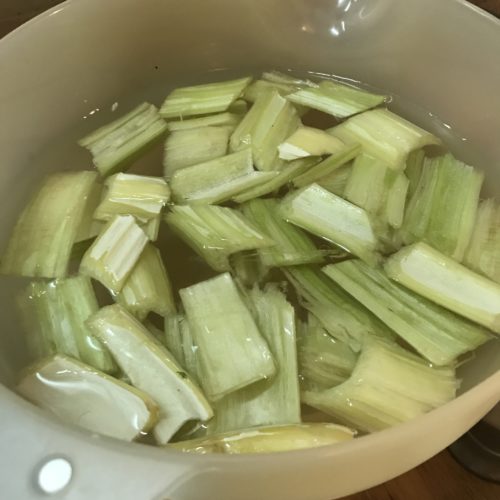“Did you see my cardoons?”
Mike pointed to a pile of leafless, longer celery. I have eaten cardoons, I remember, at an optimistic Sicilian-only restaurant in Manhattan, long- and quickly gone, and in one other place, forgotten. Never saw them in a market before, and the produce guy, who pretends to know me, was proud.
I looked, touched, and didn’t buy, a cooking coward. Then I drove back.

The plant seemed bruised and tired, with browning ends, but I read what I had to do: it’s a thistle, an artichoke cousin, so I sheared the white, whiskery thorns off the edges, extracted its veins like a Renaissance doctor, cut away what rot I could, and sliced my surviving reward into adult pieces.
Boiled the impersonators for a while in salted water and a spoon of flour, dredged them out, sautéed in butter and olive oil — yes, I imagined they were old celery friends, Twilight Zone aliens in disguise — and covered ’em in whatever broth I had, chicken today. Simmered till soft, made a soup with egg and Parmesan, Italian fashion.
Not really like artichoke, to which it is related, neither heart nor leaf-scrape. Nothing like celery, if you eat blind, though simultaneously fleshy and chewy.

Another stolen method, but recipes float in clouds and rain on me. Words that sound alike are homonyms. Foods that look alike are deceptive homo twins. A warning: be as mindful of their flavors as they are. Every result is confusion, always welcome.

I have grown and cooked cardoons and I love them, especially baked with Parmesan. I’ll have to try your soup recipe, Jeff.
I tasted cardoons years and years ago at Chez Panisse. Not even Alice Waters could make this a desired vegetable! But I love your description.